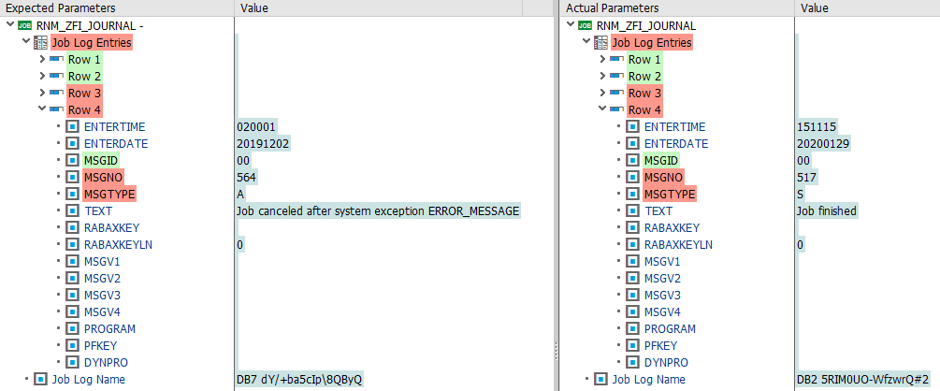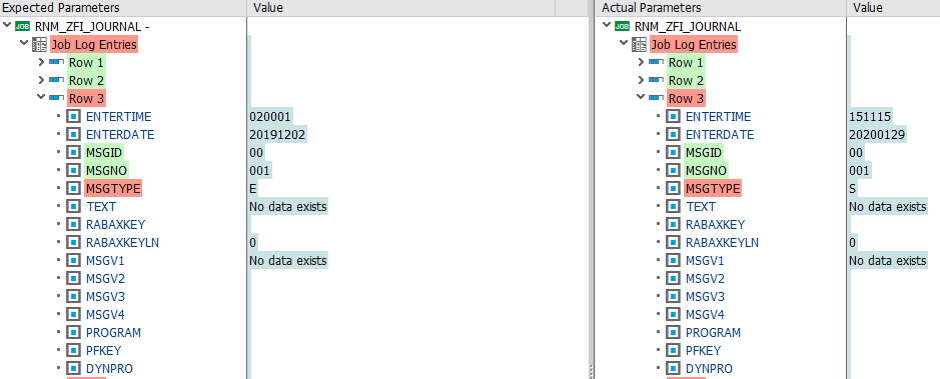This defect has been raised because an unexpected message has been raised in a batch job.

In the investigate screen, we can see that rows 3 and 4 in the job log are being highlighted as differences.

The last row of a job log is always the “Job cancelled” or “Job finished” message.

We can see here that in the recording the job was cancelled because it received an error message. However, in the playback the job finished normally. We now need to look at the 3rd row in the job log to see if we can find out more detail about what went on.

Here it seems that the only difference is that the MSGTYPE has changed from an E in the recording to an S in the playback. MSGTYPE denotes the severity of a message, and batch jobs will terminate if they encounter a message with MSGTYPE=E (unless the message is otherwise handled in the code). We can also see that the message text “No data exists” is the same in both the recording and the playback.
What has happened here is that in the release, the message being generated when the batch job finds no data to work on has changed from type E to type S. This job is a periodic job, running every 15 minutes to upload data into SAP from files on the application server. Since there will not always be files to process every time the job runs, a “No data exists” condition is actually normal. The Basis team requested this change to the message output when there is no data to process to prevent multiple unnecessary job cancellations, as they are required to investigate these.
Since this defect was as an expected result of a change being introduced in the new release, it can be ignored.
It should also be noted that any future recordings (and playbacks based on them) that are taken after this change has been imported into production will no longer raise this defect.



Post your comment on this topic.